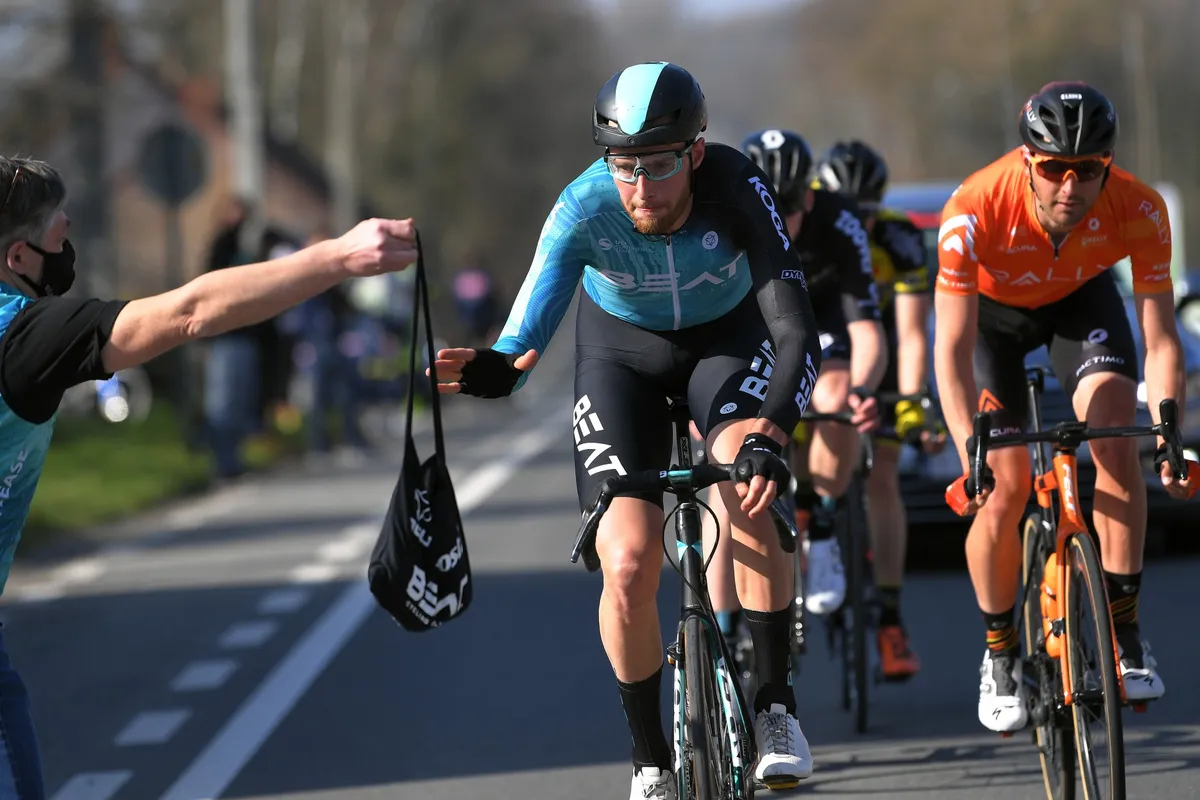Jan-Willem van Schip has been disqualified from the Baloise Belgium Tour after using Speeco's Aero Breakaway Handlebar on stage three.
According to a statement released by van Schip's team, BEAT Cycling, the UCI has deemed that the use of the radical handlebar, which features forearm extensions to allow a rider to adopt an aerodynamic position, is in breach of technical regulations.
That, according to the team, is despite a UCI commissaire at the race giving van Schip the "green light" to use the handlebar ahead of the third stage. Van Schip, a former world track champion, subsequently got into the day's breakaway.
"BEAT Cycling has learned with great surprise of the disqualification of Jan-Willem van Schip in the Baloise Belgium Tour after the third stage," reads the team's statement.
"The disqualification is based on the ABB handlebar that Jan-Willem used during the stage and which, according to the UCI statement, are [not] allowed. We do not understand this decision.

"Since the launch of the ABB handlebar, we have been discussing this with the UCI. Never, the UCI informed us that the handlebar would not be allowed. The UCI has also seen no need to accept the offer of the developer of the ABB handlebar to further investigate the admissibility.
"On the morning before the start of the third stage, we even discussed our intentions to ride with the handlebar with the UCI commissaire on site. Here we got the green light to start with the ABB.
"The UCI has not made any reservations about this. BEAT believes that the disqualification is unjustified and that Jan-Willem van Schip is seriously affected."
Earlier this year, the UCI banned the 'supertuck' position, popularised by Chris Froome on stage eight of the 2016 Tour de France, as well as the use of 'invisible aero bars', whereby a rider rests their forearms on the handlebar tops – and leaves their hands loose in front of the bar – to gain an aerodynamic advantage.
Article 1.3.008 of the UCI Regulations states: "The rider shall normally assume a sitting position on the bicycle. This position requires that the only points of support are the following: the feet on the pedals, the hands on the handlebars and the seat on the saddle."
A further UCI update reinforces the rule: "Riders must observe the standard position as defined by article 1.3.008. Sitting on the bicycle’s top tube is prohibited. Furthermore, using the forearms as a point of support on the handlebar is prohibited except in time trials."
Original story continues below.
Remember when we reported on Jan-Willem van Schip’s super-narrow 32cm handlebar? Well, the Dutch pro is back at it again, this time racing Speeco’s Aero Breakaway Handlebar at the Belgium Tour.
The former track world champion is known for using a particularly narrow handlebar (narrow is aero, after all…) but Speeco’s Breakaway steps things up when it comes to unconventional cockpit setups.
In fact, van Schip developed the crazy handlebar in conjunction with Speeco, the Dutch company that launched the Breakaway in December 2020.
The one-piece, integrated handlebar features extended forearm supports, allowing van Schip to adopt an aerodynamic, flat-back position when riding on the hoods.
As we know, the UCI isn’t averse to banning any new, unconventional technology, so we’re more than a little surprised to see the Aero Breakaway Handlebar used in competition and, more pertinently, that cycling’s world governing body hasn’t outlawed it. Yet.
Van Schip, who rides for the UCI Continental-registered BEAT Cycling team, is using the handlebar on his Koga bike at the Belgium Tour and made a move into the breakaway on today’s third stage.
The Breakaway features a short (for road bikes) 70mm, 17-degree stem as standard and flared drops, but the reach is customised.

The handlebar’s ‘extensions’ have a concave shape to support the forearms. Despite the unconventional design, Speeco says the shifter position remains unchanged.
Interested? The custom-made Speeco Aero Breakaway Handlebar is available for €1,500.
